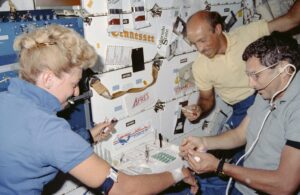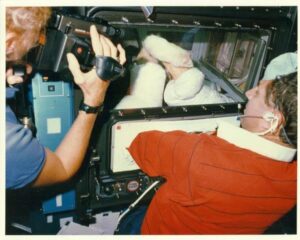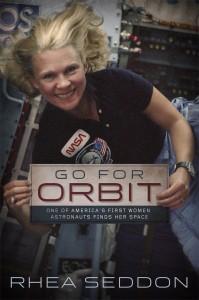Rocket Science
“It ain’t rocket science” is often a term used to mean something isn’t as difficult as the building of rockets. For me, it meant the science that was done on rockets—like what I did on my Shuttle flights.
Not long ago, I gave a talk to a group of research scientists who are performing ground-breaking studies in many engineering and science fields. I read summaries of their work…so complex I couldn’t understand it all. I began to think the science that I had done with NASA was simple by comparison. Then I decided that our “rocket science” was difficult in a different way.
We had to do it without gravity.
Think back to your days in high school science classes – specifically to the “hands on” part that was to demonstrate how science experiments are carried out. Maybe you poured chemicals into beakers and watched the gas form, dissected a frog in biology, or timed the fall of an object for physics lab. Now try to figure out what would happen to those same studies in space. They couldn’t be performed the same way, and the results would be wildly different.
Right?
On my Life Sciences Spacelab flights, we had to reconsider how we’d do the experiments proposed by scientists from all over the world. For instance, everything (like test tubes for blood draws, checklists, and even human subjects and operators) had to be secured so they wouldn’t float away. Without the “Maytag repairman,” crewmembers had to know how to fix any broken equipment. As the onboard scientists, we had to be keen observers. What if the results of a test were unexpected? Could the study be modified to explore the cause?
Unlike doing a study on one subject in a ground-based lab, all the experiments had to share resources like power, data recording, communication with the ground – and the four subjects themselves. The timeline had to be choreographed.
Choreographed with care.
Certain chemicals—like Freon or Argon—could be used, but only in small quantities. If for some reason their containers leaked out all of their contents at once, the concentration of them in the lab could reach dangerous levels. That could pose a hazard in the closed environment inside the lab. A window couldn’t exactly be opened to air the place out.
Working with the rats that we had brought along was difficult. Even designing their cages was a challenge for the engineers. How would they be fed and watered? How could their waste be contained? How could they be taken out of their cages for testing? What if one got loose in the lab?
All eventualities had to be considered.
For those of us who love science, the missions were fascinating not only for the data collected on how humans and animals adapt to weightlessness but for the satisfaction of knowing we had learned remarkable things about being scientists without gravity.
– Rhea
We’d love to add you to our email list.
If you have not yet signed up, please do so by clicking here.







It still amazes me the literally thousands of things that, taken for granted on earth, have to be considered and planned for in space. The planning that goes into a space mission is incredible